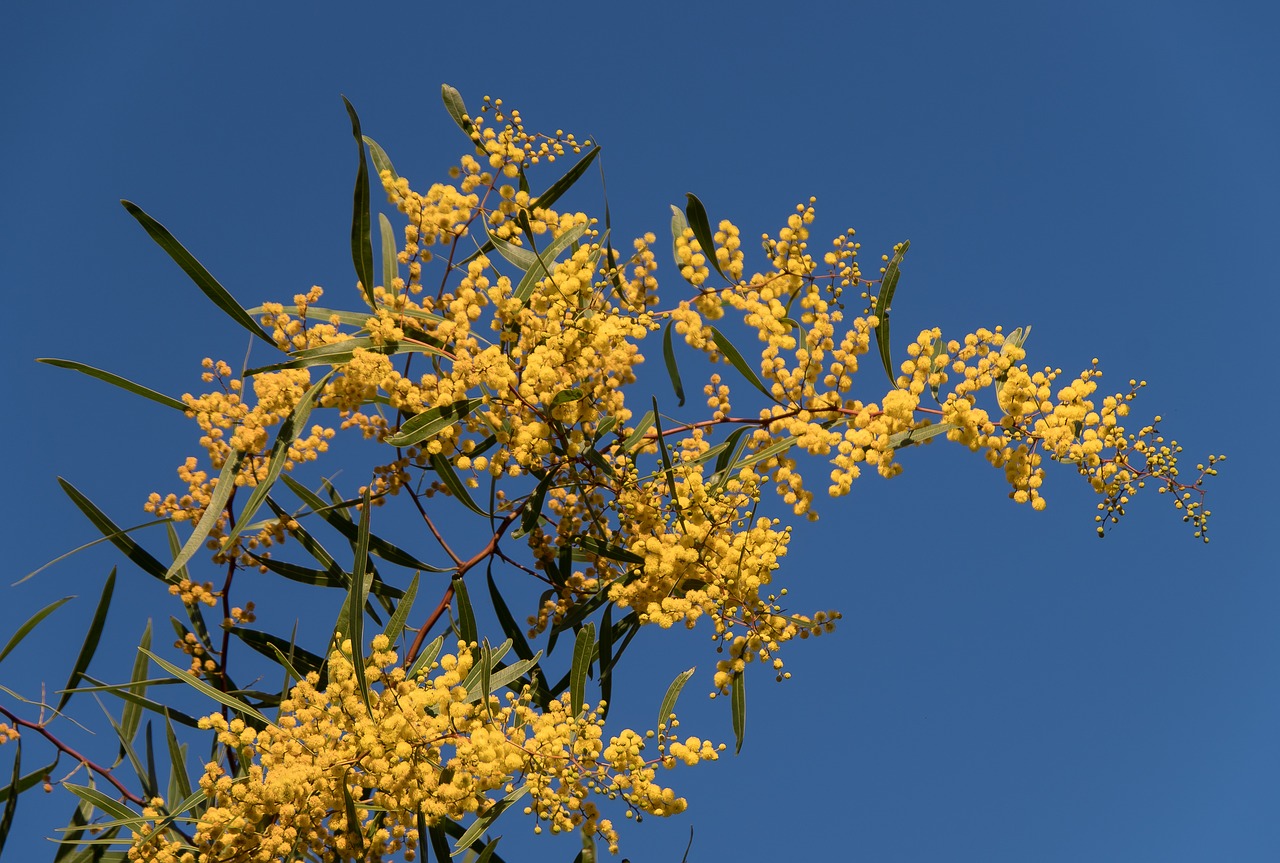
If you are looking for trees that resist drought without problems and that are almost completely covered with flowers during spring, then I encourage you to put one or more in your garden Acacia. These trees have a fairly fast growth rate, and they also have evergreen leaves, so you won't have to rake very often, as they are not very messy plants.
Yes it is true that when the flowering season ends, the ground ends up full of small yellow petals, but that can even be pretty; and, in any case, if it is near the pool, they can be removed with the net. Would you like to know what are the most popular Acacia species for gardens and what are its characteristics? Let's go there.
acacia baileyana
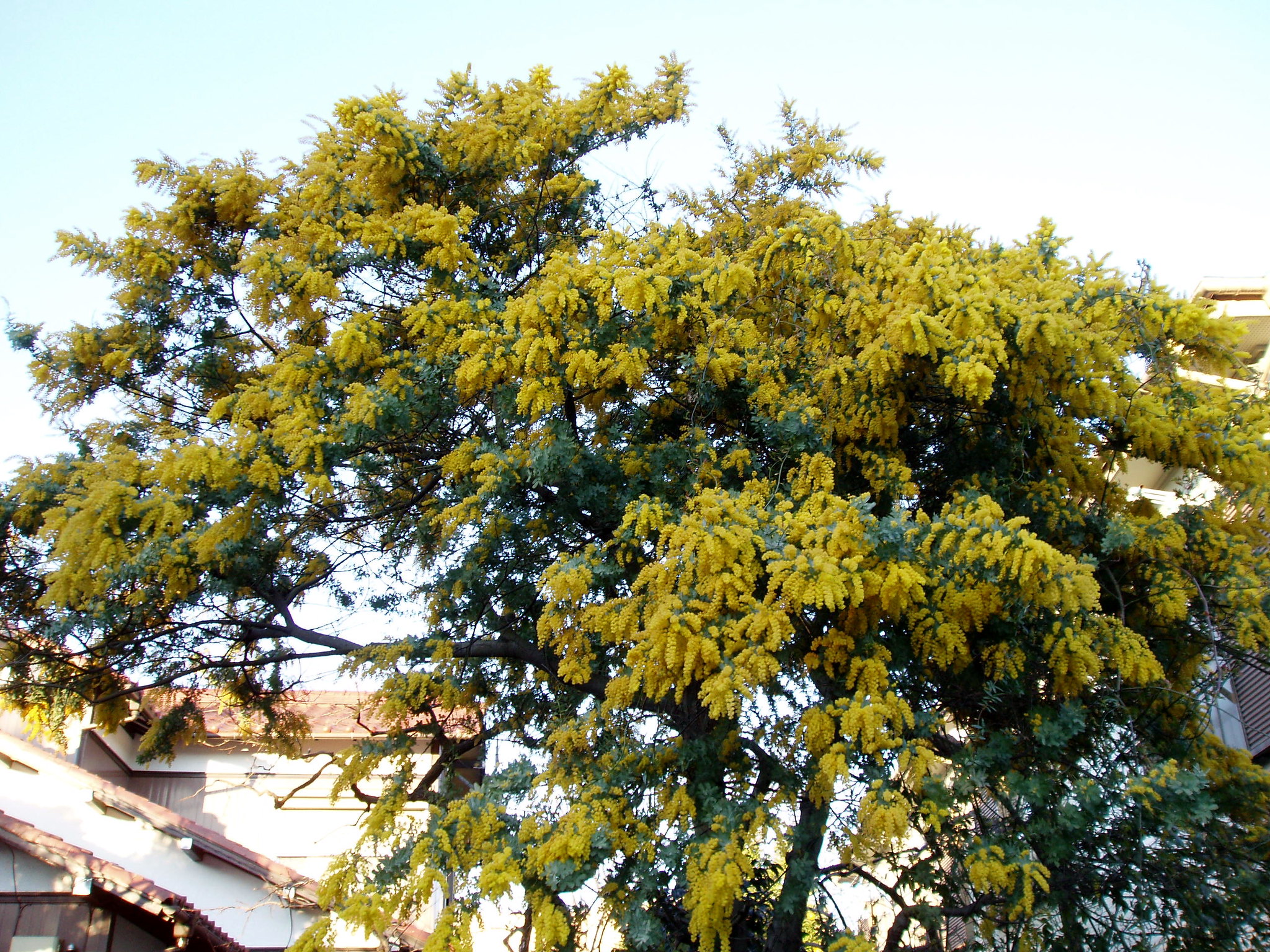
Image - Flickr / Nemo's great uncle
La acacia baileyana is very similar to A. farnesiana, but unlike this one, it does not have any thorn. There are two types: green leaf, and purple leaf, whose scientific name is Acacia baileyena »Rubra». Both are originally from Australia. It grows to a height of 4-5 meters, and has a thin trunk 30cm in diameter. It resists temperatures down to -7ºC.
acacia dealbata
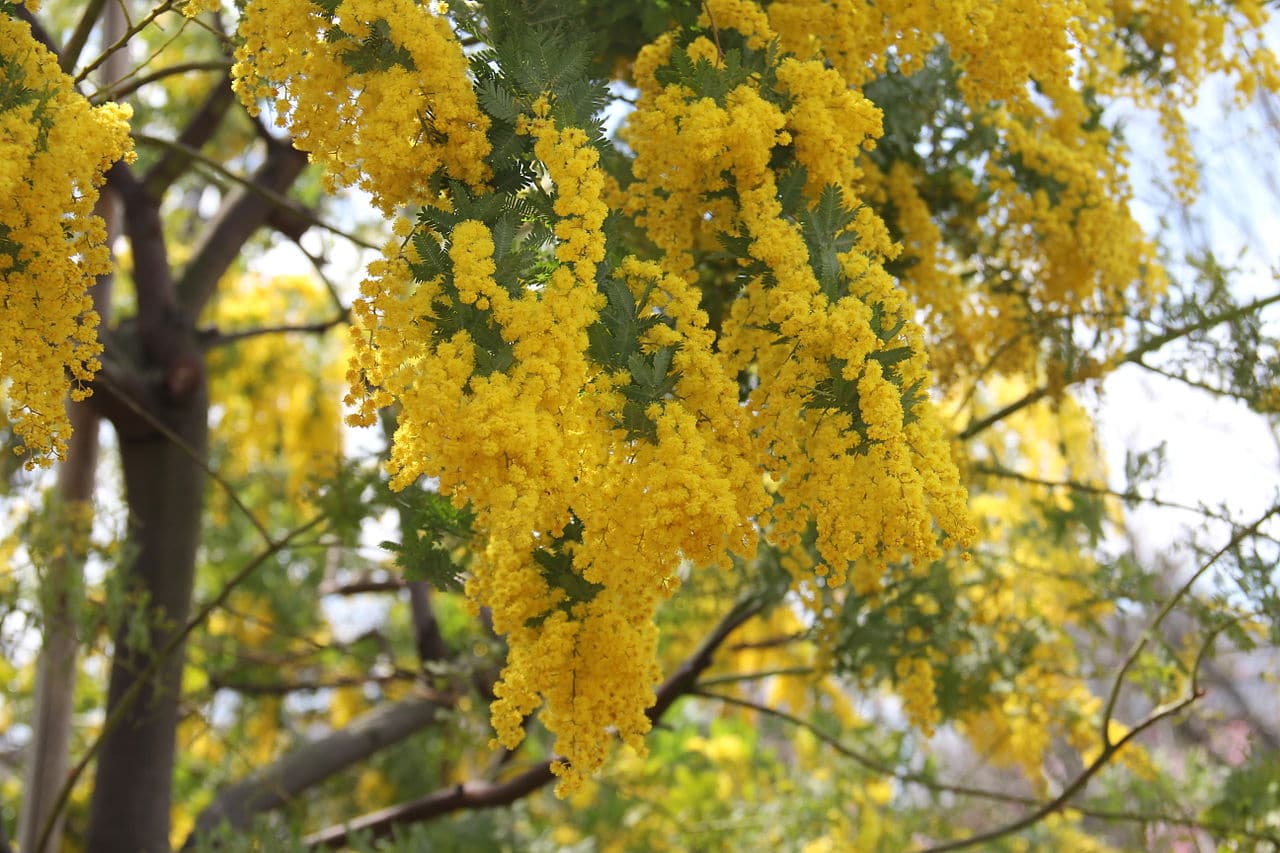
Image - Wikimedia / Roozitaa
La acacia dealbata, known as French scent, Australian acacia or silver mimosa, is an evergreen tree native to Australia and Tasmania. Grows up to 10-12 meters tall, and develops bipinnate green leaves. Its trunk is straight, with gray or white bark, and smooth. Resists up to -12ºC.
In Spain it is considered an invasive species, being included in the Spanish Catalog of Invasive Exotic Species that you can consult by clicking on this link.
acacia farnesiana
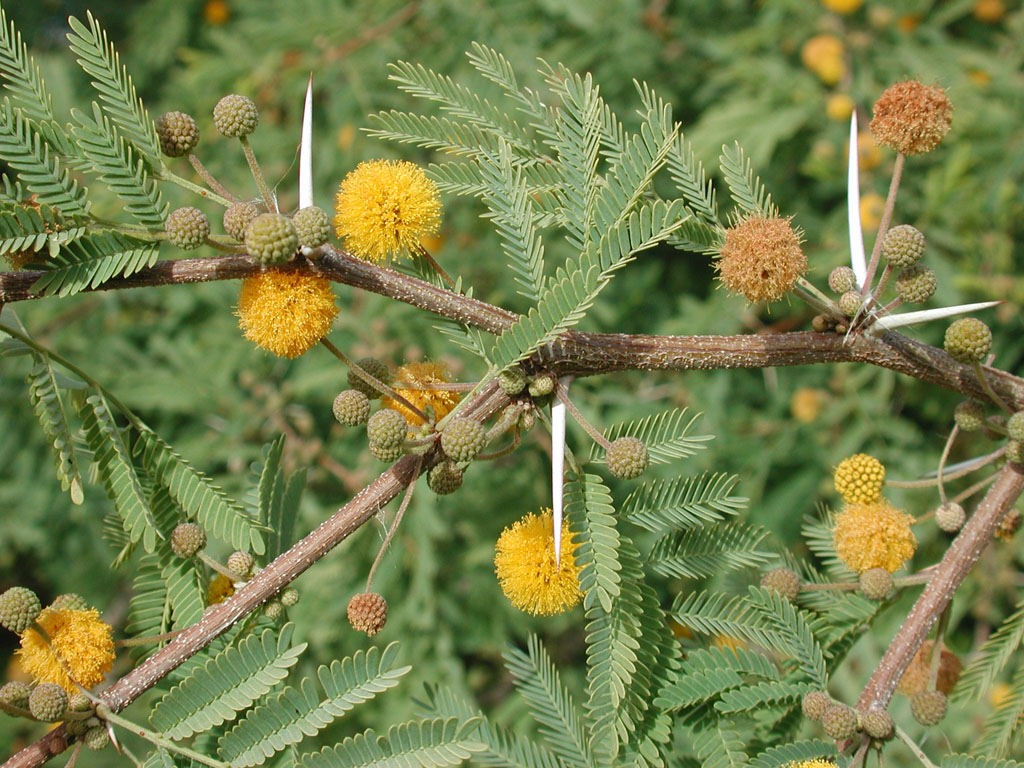
Image - Wikimedia / Mike
La acacia farnesiana is a tree that It can be allowed to grow up to 10 meters, or have it as a shrub of up to 3 meters. It is native to tropical America. It has bipinnate green leaves and spines that are about 2cm long. The trunk is thin, up to 30cm in diameter. It also resists up to -7ºC.
acacia karoo
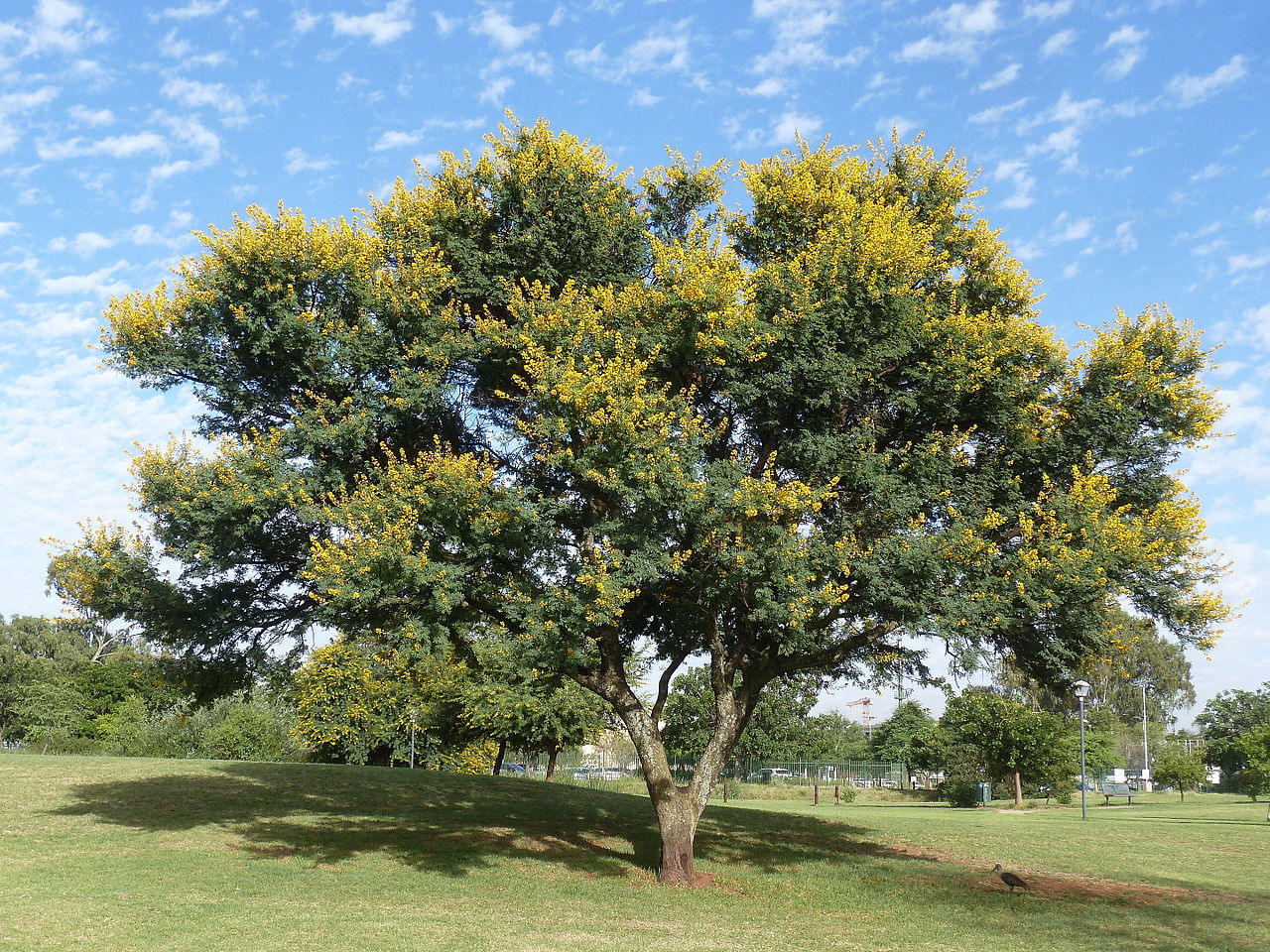
Image - Wikimedia / JMK
La acacia karoo, known as the South African aromo, is a spiny evergreen tree native to southern Africa. It grows between 4 and 12 meters in height, and can reach 17 meters. The trunk tends to lean a little as it ages, and its crown is rounded, from which bipinnate green leaves sprout. Resists up to -7ºC.
acacia longifolia
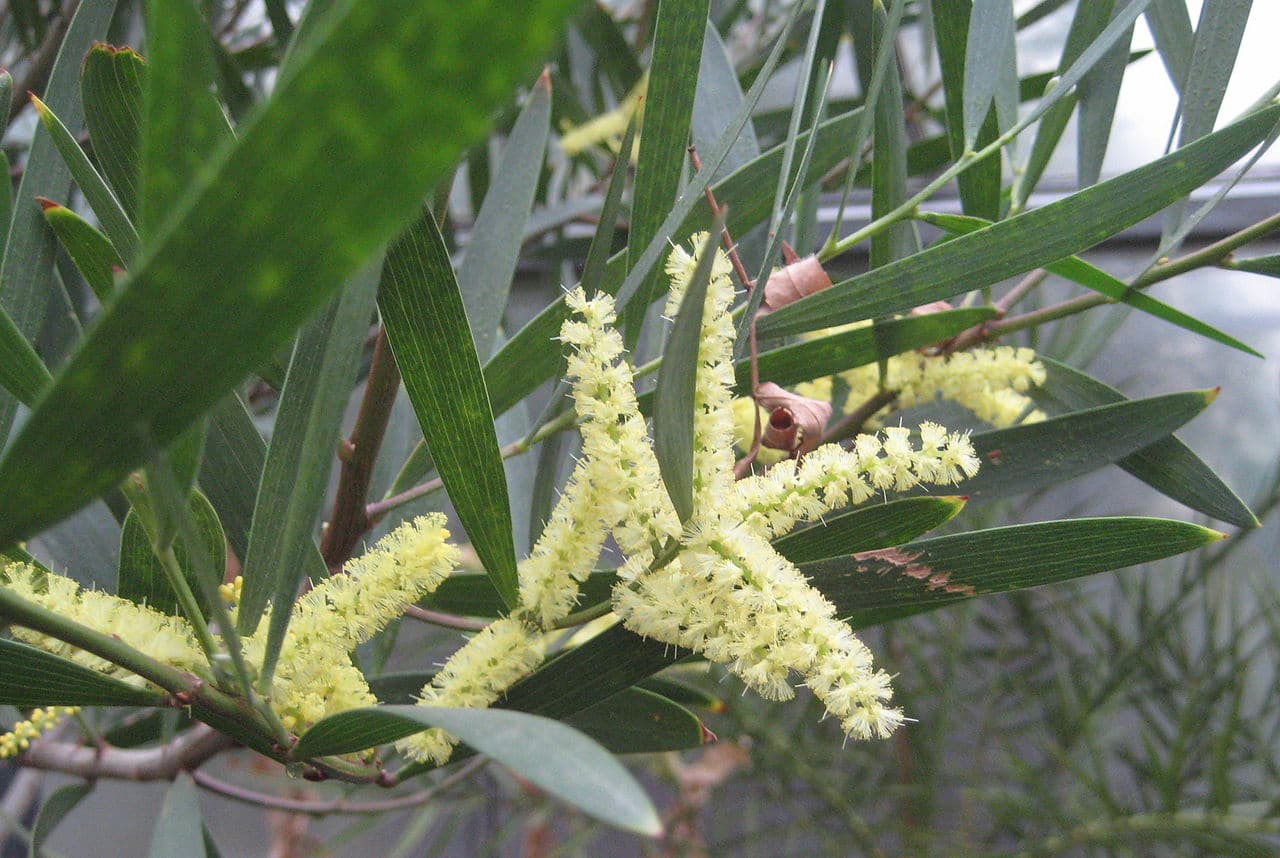
Image - Wikimedia / Michael Wolf
La acacia longifolia, known as double scent or acacia trinervis, is an evergreen tree native to eastern Australia. Grows to a height of 7 to 10 meters, and the trunk is straight or somewhat tortuous. Its leaves are linear, of a very beautiful dark green color. Resists up to -7ºC.
acacia melanoxylon
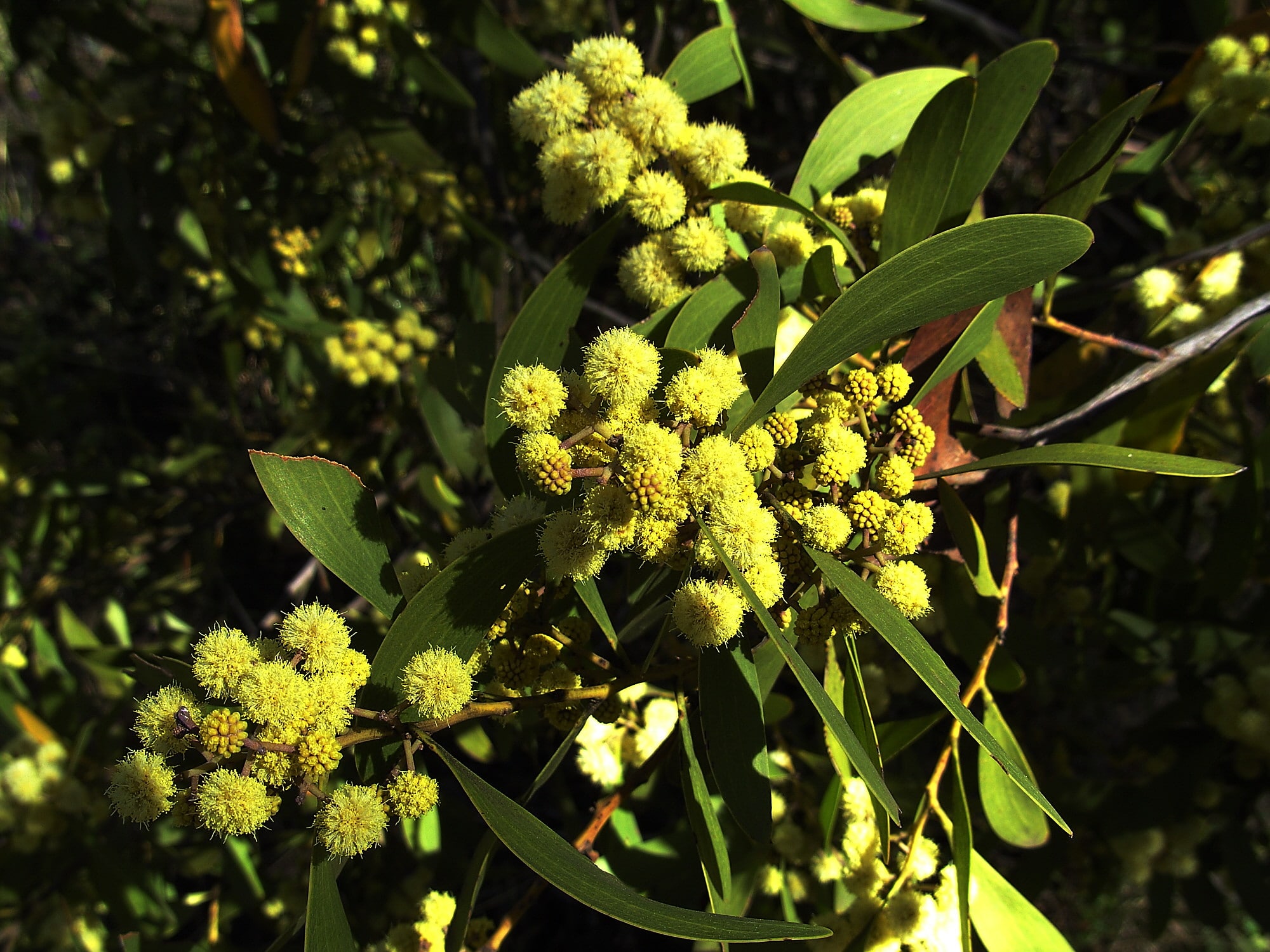
Image - Flickr / Ian Sutton
La acacia melanoxylon, known as black acacia, is a type of acacia native to Australia that It grows as an evergreen tree up to 45 meters high (although the most normal is that it does not exceed 15 meters). Its leaves are bipinnate in young plants, but elongated in adults, measuring 7 to 10 centimeters long. It has a powerful root system, and resists up to -7ºC.
Acacia pycnantha
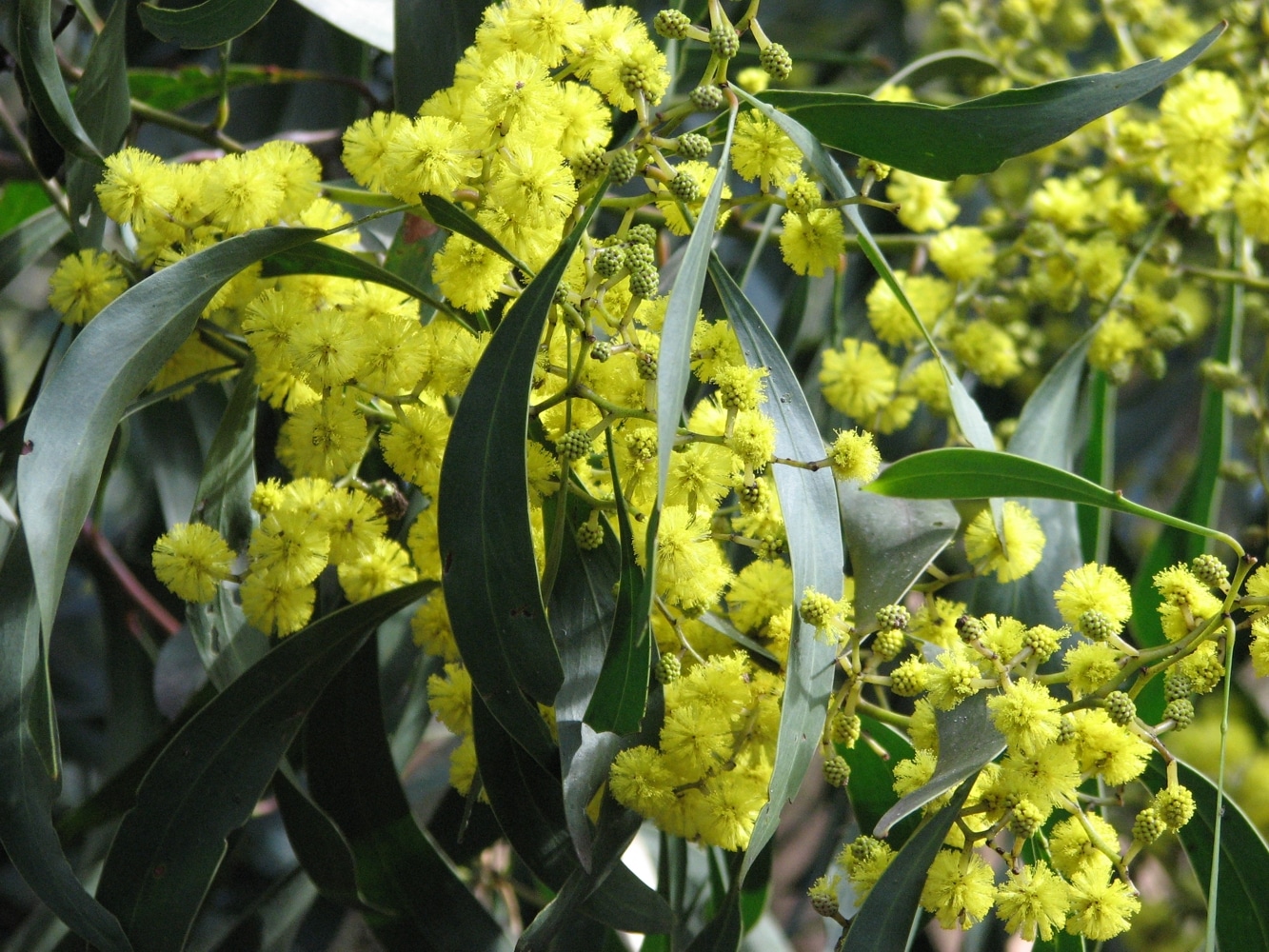
Image - Wikimedia / Melburnian
La Acacia pycnantha is an evergreen tree endemic to Australia that reaches a height of 12 meters. Its leaves are linear, between 9 and 15 centimeters long by 1 to 3,5 centimeters wide. Resists up to -7ºC.
Acacia retinoids
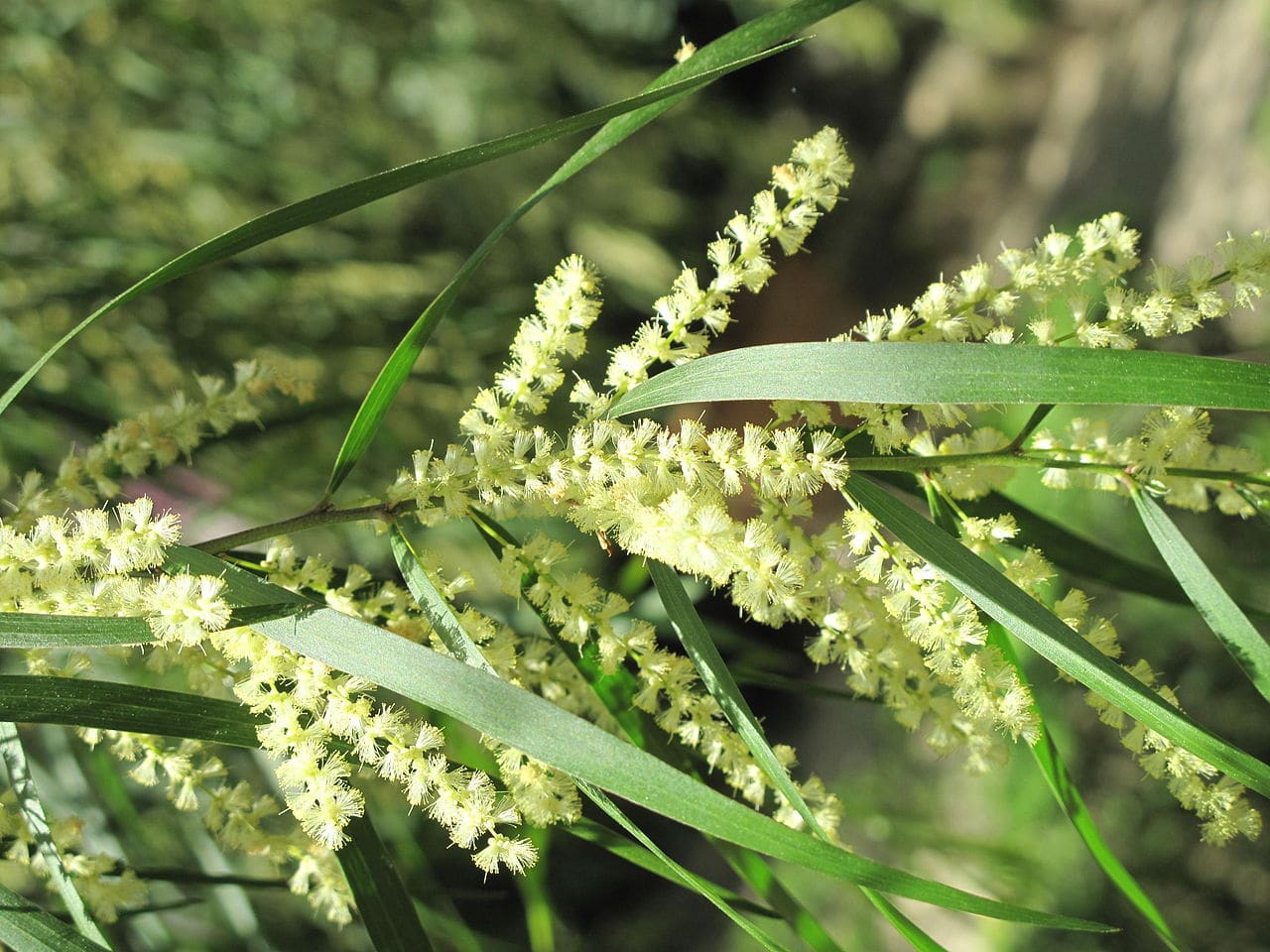
La Acacia retinoids (now it's called acacia floribunda), known as white acacia, is an evergreen tree native to Australia and Asia that reaches 7 meters in height. Its leaves are linear, dark green, and sprout from branches that form a wide crown. It resists frosts down to -12ºC.
Note: If you are a sensitive person, you may end up having allergy symptoms, but only if exposure is frequent (here you have a study that talks about it).
Acacia salicin
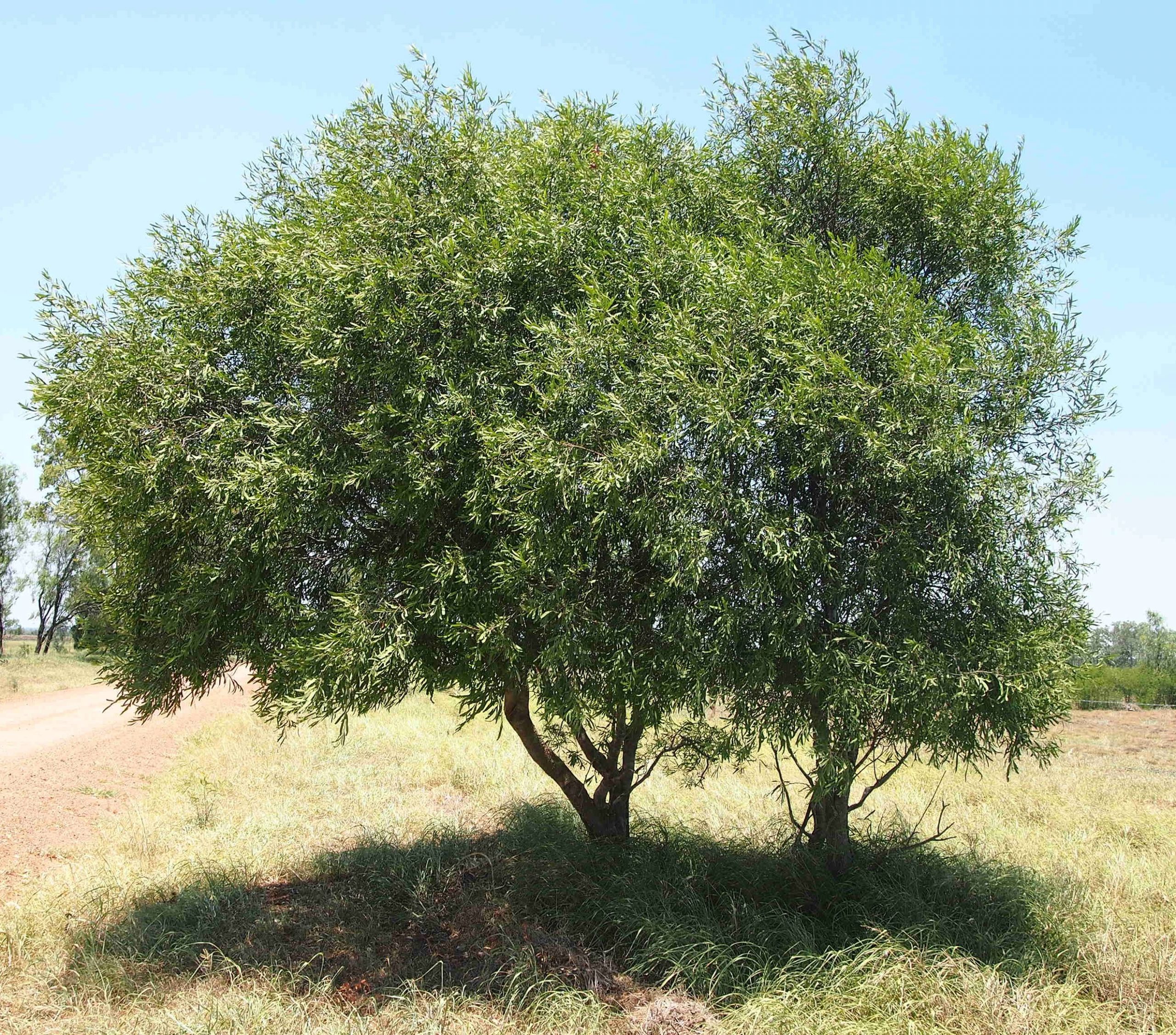
Image - Wikimedia / Mark Marathon
La Acacia salicin, known as willow-leaf acacia, is a small evergreen tree with a somewhat weeping crown native to Australia. Reaches a height of 4 to 6 meters. Its leaves are elongated, linear, with a size of up to 15 centimeters long. The trunk tends to lean a little, something that undoubtedly contributes to increasing its ornamental value. Resists up to -7ºC.
acacia saligna

Image - Wikimedia / Alvesgaspar
La acacia saligna (synonymous Acacia cyanophylla) is a shrub or small tree native to Australia that grows to 5-6 meters in height, with a crown diameter of 4-5m. Despite its size, it can be pruned towards the end of winter to keep it a narrower and / or lower crown. The leaves are linear, up to 10cm long, dark green. The trunk is 30-40cm in diameter, and has a smooth, brown bark. Resists up to -7ºC.
acacia tortilis

Image - Wikimedia / Haplochromis
La acacia tortilis, known as flat-topped acacia or African acacia, is a tree native to North and East Africa, even reaching the south of the continent. It is a thorny tree, with a straight or somewhat tortuous trunk, which can reach a height of 14 meters. Its crown is parasol, and bipinnate leaves sprout from it. It does not resist cold or frost.
Did you know any of these Acacia species?
I have a 5m acacia tree that never gave flower?
Hello Melitina.
It may still be young, but it can also be due to lack of watering. These plants resist drought very well, but if you give them a weekly watering they will grow better and have more strength to flower.
A greeting.
I have in the park a similar Constantinople acacia, the same branches, leaves, trunk but it does not have the red buds, my question is how are its roots since I put roses at a distance of approx. of 7 meters and I found roots at a depth of 8 30 CM. ) 2 to 3 cm thick. And I am concerned that they are from that floor since I have my house at the same distance, and that there may be roots under the floor. Could you comment on this ????
Hello Arnaldo.
The roots of your tree are not invasive. Are there other plants near your house? Pines, eucalyptus or Ficus at about 10-15 meters?
Anyway, for it to flourish sometimes it takes a little time. Do not worry. In this link you have his token.
Greetings.